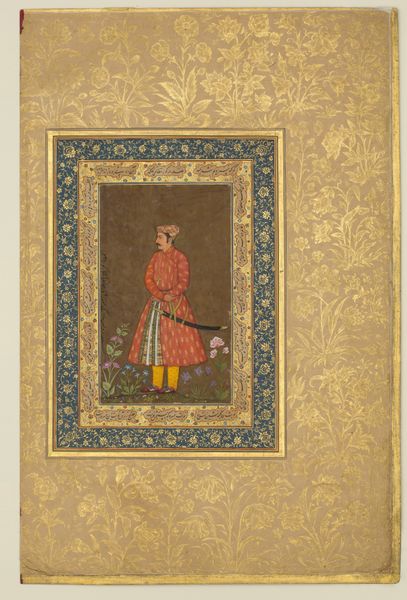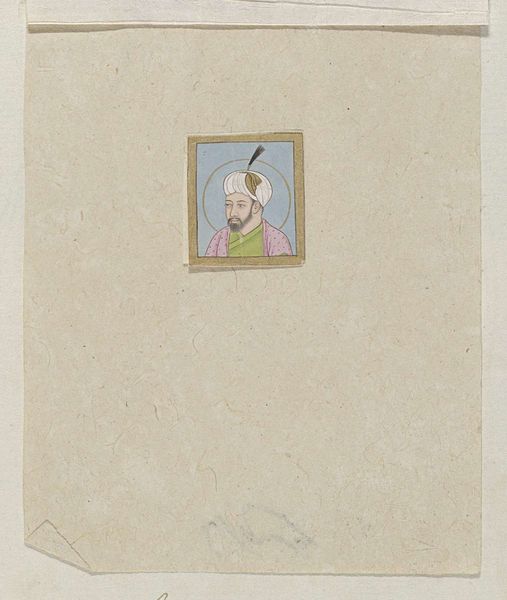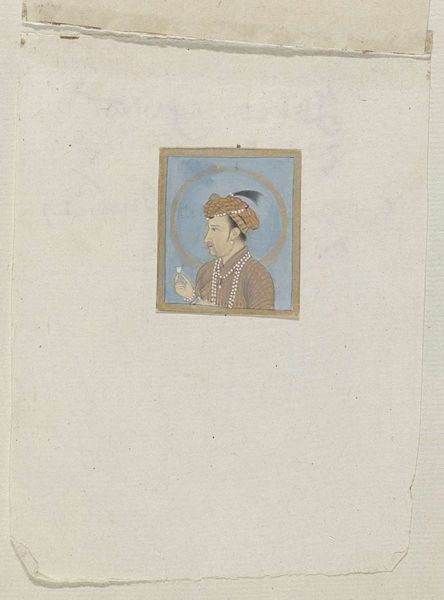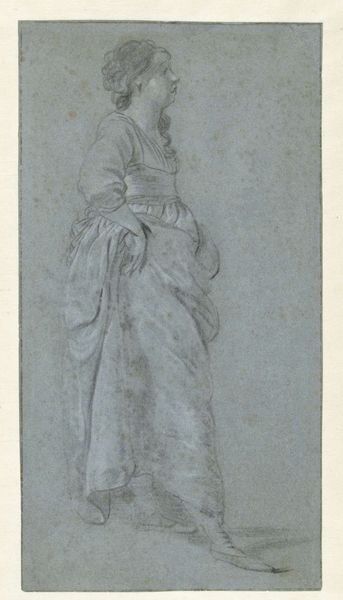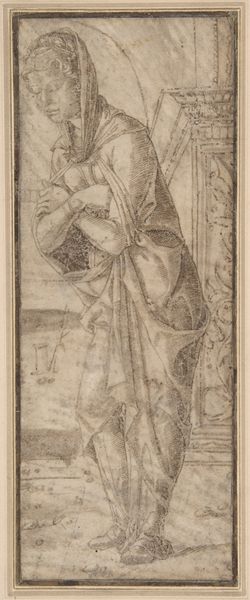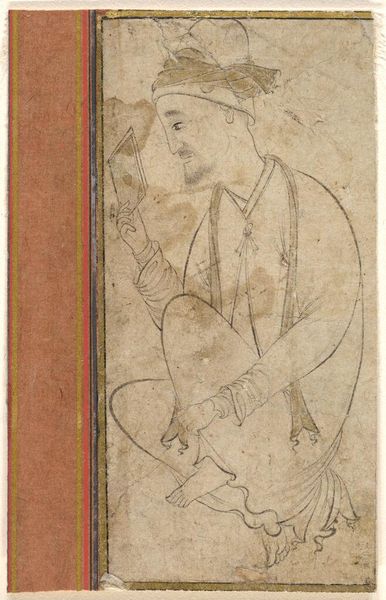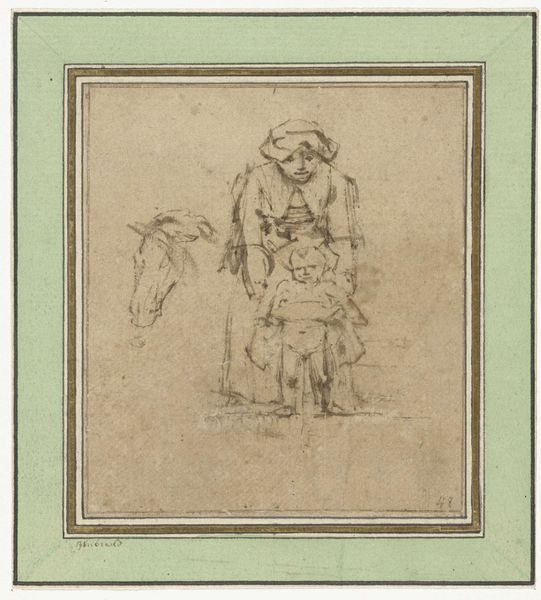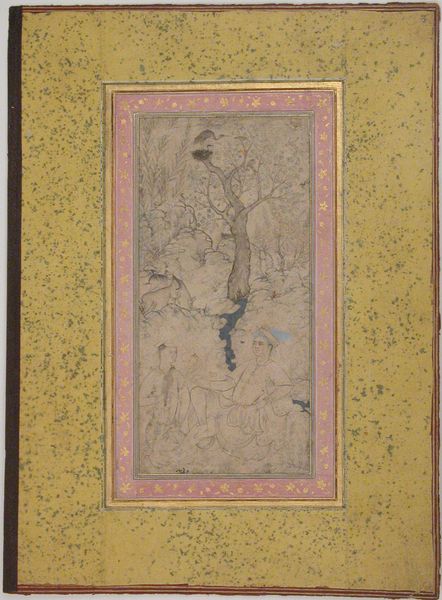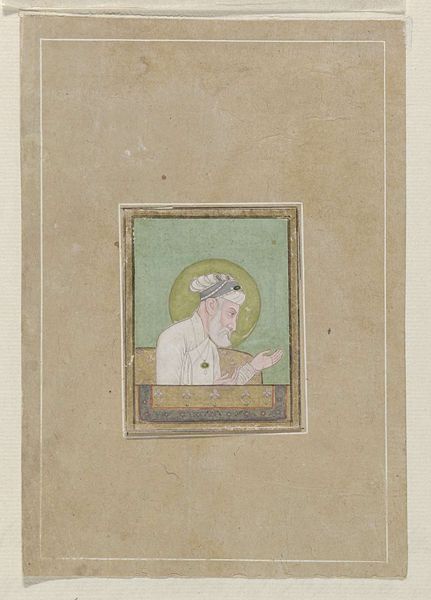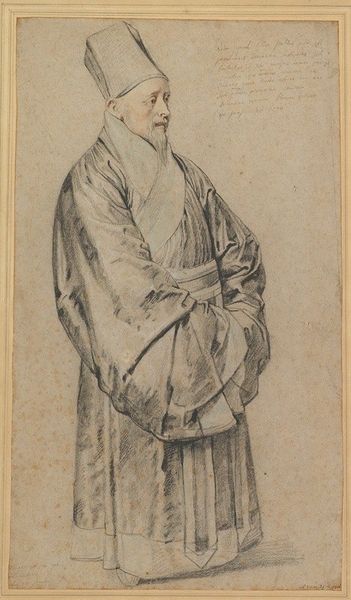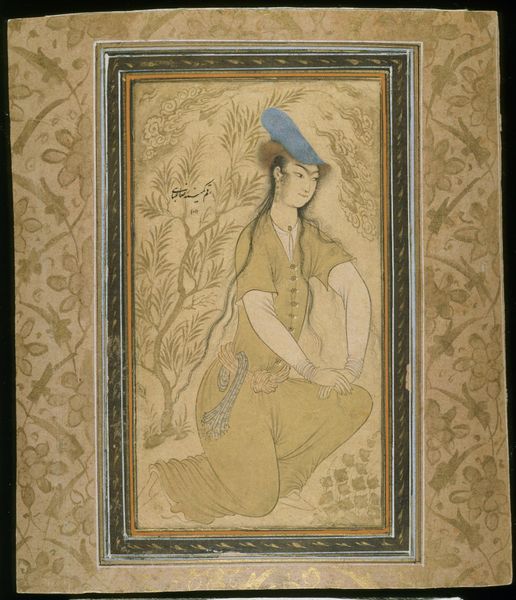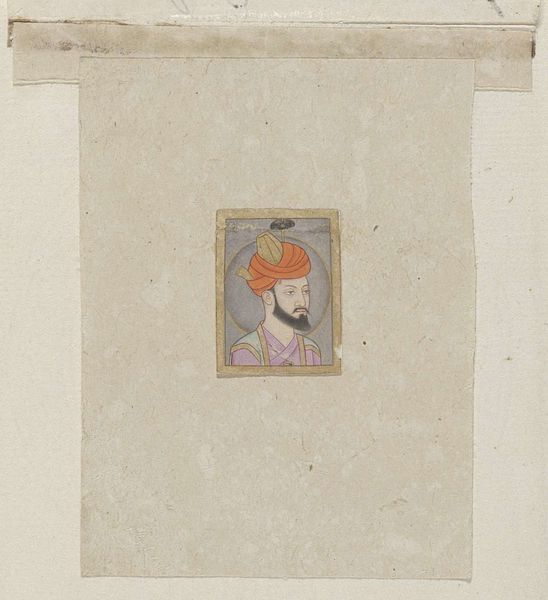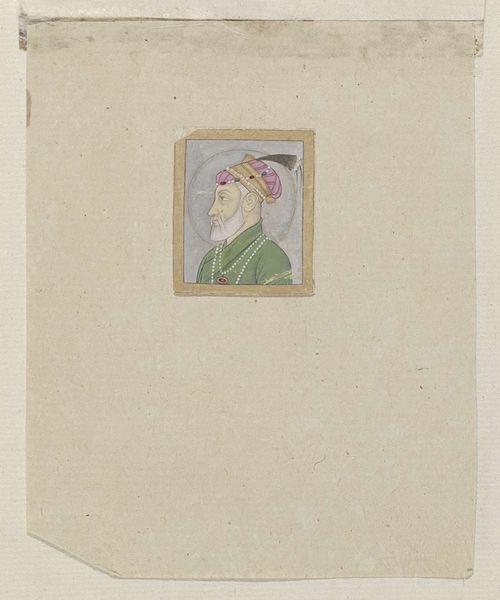
drawing, paper, ink, pencil
#
portrait
#
drawing
#
figuration
#
paper
#
ink
#
pencil
#
islamic-art
#
miniature
Dimensions: H. 5 9/16 in. (14.1 cm) W. 2 1/2 in. (6.4 cm)
Copyright: Public Domain
Curator: This drawing, believed to be from between 1575 and 1625, is entitled "Man in a Long-sleeved Coat," and attributed to Riza-yi 'Abbasi. It’s rendered in ink and pencil on paper. Editor: There's a delicacy to this sketch that I find immediately compelling. It almost floats on the paper, ethereal. Curator: Ethereal is a fine word. Notice how 'Abbasi uses very fine, almost tentative lines to delineate the figure's form. The shading is minimal, and we still get a strong sense of three-dimensionality. It displays an astute understanding of the human form. Editor: What’s interesting from my perspective is the cultural function of such a portrait at this time. How would a work like this have been viewed within its original social milieu? The subject's elaborate turban suggests status – to me, that head covering says much about visibility, maybe wealth and power structures. Curator: Absolutely. And the very creation of the portrait hints at a patron with means, keen on cultivating and celebrating particular ideals. I am drawn to how the subject is composed in relation to the decorated framing, which has an independent rhythm of its own. Editor: I'm especially curious about how art of this era served as a kind of mirror, not only reflecting social roles but perhaps also subtly shaping them. Were there conventions governing how such a figure should be represented? How did Riza-yi 'Abbasi comply, and where did he deviate, consciously or unconsciously? Curator: The composition does appear relatively formulaic: the three-quarter view, the contemplative stance. It emphasizes certain formal tropes of portraiture to generate a recognizable depiction, almost standardized by cultural preference. However, I suggest that is why we may be equally arrested by the overall texture and line qualities. The apparent sketch is in fact so deftly worked with attention paid to visual hierarchies. Editor: A lovely observation that illuminates the inherent politics of such artistic production. What narratives of class and taste does its careful rendering silently advance? The work of an artist such as Riza-yi 'Abbasi in many ways sets visual precedents that speak to much larger, and deeply layered ideas of governance. Curator: Agreed. A valuable painting, it offers great opportunity to explore issues of line, form, and texture. Editor: Indeed. Considering its historical and political contexts offers an enhanced appreciation of this work.
Comments
No comments
Be the first to comment and join the conversation on the ultimate creative platform.
